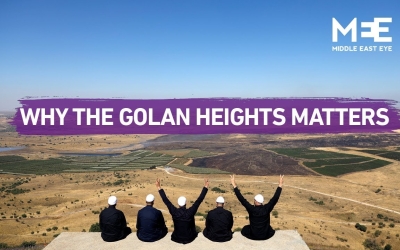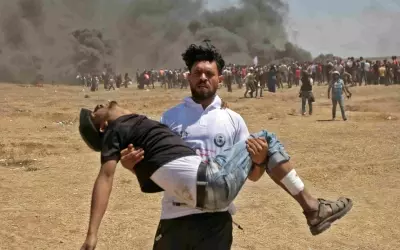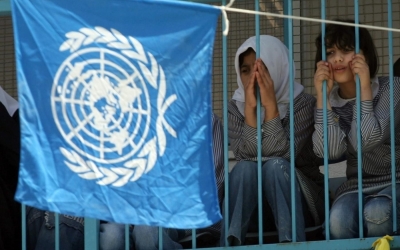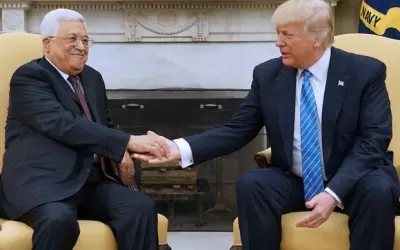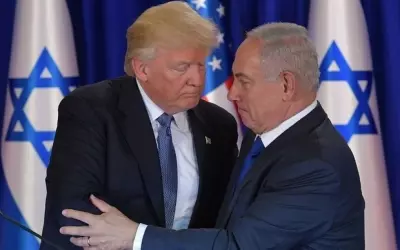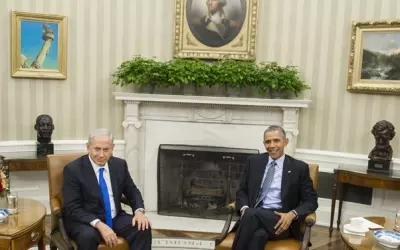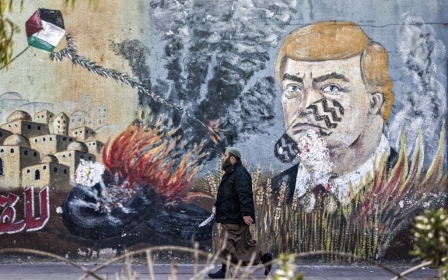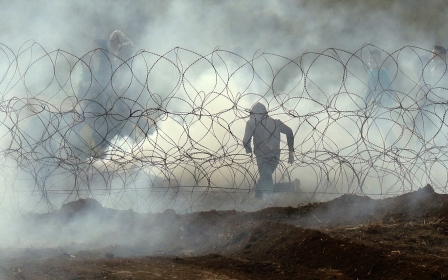Eight key moments of US support for Israel, long before Trump's 'deal of the century'
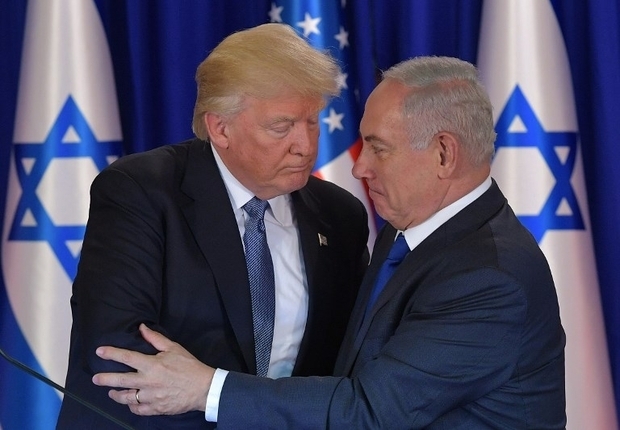
As the United States is set to unveil parts of its long-awaited "deal of the century," Donald Trump's administration has faced a barrage of criticism for its fervent support for Israel.
Since taking office in 2017, the US president has cut all foreign aid to the United Nations agency for Palestinian refugees, moved the US embassy from Tel Aviv to Jerusalem, and closed the Palestine Liberation Organisation's office in Washington, among other contentious moves.
But many of Trump's recent decisions have roots in previous decades of US policy, which has long favoured Israel at the expense of Palestinians.
In fact, while "Trump's actions are worse ... the basis of those policies predates the Trump administration," said Omar Baddar, deputy director of the Arab American Institute in Washington.
"The US after Trump went from being a biased mediator to flat out joining Israel's war against the Palestinian people," Baddar told Middle East Eye.
New MEE newsletter: Jerusalem Dispatch
Sign up to get the latest insights and analysis on Israel-Palestine, alongside Turkey Unpacked and other MEE newsletters
"But you can see that it was all built on the existing policies that came before, which enabled Israel's worst behaviour toward the Palestinians."
Here, MEE examines eight key historical moments that define Washington's unabashed support for Israel - and the consequences Palestinians have shouldered as a result of the unshakable relationship between the two countries.
1. US immediately recognises Israel, 1948
Immediately following Israel's declaration of statehood, president Harry Truman announced Washington's recognition of Israel, without any mention of Palestinian statehood.
In a statement, Truman said the US had been informed "that a Jewish state has been proclaimed in Palestine".
"The United States recognises the provisional government as the de facto authority of the new State of Israel," he said, without adding anything further.
The White House press secretary also issued a statement of recognition, highlighting the "desire of the United States to obtain a truce in Palestine".
But the move did not come without criticism at home.
The American Council for Judaism, for example, spoke out against the US's support for the fledgling State of Israel, saying at the time that "European and Palestinian Jewry has been manipulated and maneuvered to suggest support for political Zionism".
2. Israel attacks with US weapons, 1967
Up until the early 1960s, the US had rejected Israeli requests for all but limited amounts of defensive weapons.
By the time president Lyndon Johnson took over in 1963, however, Washington's position on sending arms to Israel shifted, a change that lay the foundations for the US's modern-day weapons sales to the Israeli government.
By 1966, the US began supplying Israel with M48A3 tanks and A-4 Skyhawk aircraft.
And by the time the 1967 war began, the Israelis had access to US intelligence, as well.
With that American support, Israeli forces took only six days to defeat surrounding Arab states in the war. It then occupied Egypt's Sinai and Syria's Golan Heights, as well as the West Bank and Gaza Strip.
At the end of the conflict, the US did not demand an immediate Israeli pullback from those territories it had occupied. Israel eventually withdrew from the Sinai, but it remains in control of the occupied West Bank, Gaza and the Golan Heights.
Earlier this year, the Trump administration recognised Israel's control of the Golan Heights in a move that was widely decried as a violation of international law.
3. US issues first of many UN vetoes, 1972
The US first used its veto power as a permanent member of the United Nations Security Council to protect Israel from criticism in 1972.
The resolution, drafted by Guinea, Yugoslavia and Somalia, expressed deep concern "at the deteriorating situation in the Middle East" and was meant as a rebuke of Israeli aggression on the Lebanese border.
It called "on the parties concerned to cease immediately all military operations and to exercise the greatest restraint in the interest of international peace and security".
In what would become a frequent practice, the US in 1976 vetoed another UN resolution, this time calling on Israel to protect holy places "under its occupation".
That same year, another resolution called for Israel to withdraw from all Palestinian territory - but the US issued a veto.
Since 1972, the US has used its veto power 44 times against draft Security Council resolutions pertaining to Israel, according to the Jewish Virtual Library.
Most recently, the Trump administration used its veto power last year against a resolution condemning Israeli violence against Palestinian protesters during the "Great March of Return" in Gaza.
In 2017, it also vetoed a draft UN Security Council resolution that rejected Trump's move to recognise Jerusalem as Israel's capital.
4. Massive US aid transfers to Israel begin, 1973
Today, Israel is the world's largest recipient of US foreign aid, receiving around $3bn annually - one-fifth of the US's yearly foreign aid budget.
But it all started 46 years ago, under president Richard Nixon.
On 21 December 1973, Congress approved a Nixon-backed foreign aid bill that included $2.2bn in emergency military aid for Israel. Nixon requested the addition to aid package during the middle of the three-week-long Arab-Israeli war that October.
During the months between the war and the signing of the aid bill, Washington sent slightly less than $1bn in military equipment to be "the edge" Israel would need if the fighting were renewed.
The bill drastically reduced military aid to other countries.
Before its passing, then-senator JW Fulbright, who was chairman of the Senate Foreign Relations Committee, protested against such a large aid package to Israel, warning that it was "ill-timed and ill-advised".
"To the Arabs it will be seen as a reaffirmation of the inability of the United States to pursue an even‐handed policy," he said during a debate on the bill.
By comparison, the US has on average provided Palestinians with around $400m in assistance annually since 1993, according to a Congressional report.
In a budget blueprint released in March, Trump proposed massive budget cuts, including a 28.7 percent cut to his own State Department, as well as substantial cuts to the US Environmental Protection Agency and the Labor Department budgets.
No cuts to Israeli aid were proposed.
5. US designates PLO a terror group, 1987
President Ronald Reagan placed the Palestine Liberation Organisation (PLO) on a US terror blacklist in 1987.
The Reagan administration also ordered the closure of the PLO's Washington information office. The group's mission to the United Nations in New York, where it was granted observer status in 1974, was allowed to remain open, however.
The American Civil Liberties Union (ACLU) and Arab-American groups challenged the closure of the PLO's Washington office, but US federal district courts twice upheld the decision.
Not long after, Congress ordered the closure of the PLO observer mission to the UN, but the international body argued that the US would be breaking international law by shuttering the office.
After the UN passed several resolutions against the move, the fight was taken to court. Six months later, a New York district judge ruled against Congress's attempts to close the UN office and said it could remain open.
In September 2018, President Trump again ordered the closure of the PLO office in Washington as part of a series of moves against the Palestinian Authority.
6. Oslo Accords fast-track settlement expansion, 1993
The US-backed Oslo Accords resulted in the PLO recognising Israel as a state and Israel recognising the PLO as a negotiating partner.
The deal also created the Palestinian Authority, an interim body meant to oversee the administration and internal security of the occupied Palestinian territories, before the advent of a final-status agreement.

Signed at the White House, the accords were supposed to set up negotiations for a two-state solution.
In the meantime, however, Israel was granted total control over all matters - including security, planning and construction - in 60 percent of the West Bank, known as Area C.
As negotiations continued between 1993 and 2000, illegal Israeli settlement-building in the occupied West Bank tripled - and there was little Palestinians could do to halt the expansion.
Before the Oslo Accords, just over 100,000 Israeli settlers lived in the occupied West Bank. Today, nearly 623,000 settlers live in illegal West Bank settlements, Israeli rights group B'Tselem estimates.
Palestinians have accused the Trump administration of seeking to use its "deal of the century" as a way to help Israel cement its control over the occupied Palestinian territories and provide cover for its ongoing settlement expansion.
7. Congress signs the Jerusalem Embassy Act, 1995
Fourteen years and three presidents ago, the US Congress passed the Jerusalem Embassy Act.
The act set aside funds for the US government to move its embassy from Tel Aviv to Jerusalem by 31 May 1999, and it recognised Jerusalem as the "undivided" capital of the State of Israel.
That, despite the fact that Israel's annexation of East Jerusalem was unrecognised by the international community, and ran contrary to Palestinian aspirations for East Jerusalem to become the capital of their future state.
Then-president Bill Clinton did not sign the act, however, instead invoking a six-month waiver to push back the law's activation.
Presidents George W Bush and Barack Obama both continued signing that waiver every six months during their respective administrations.
Last year, the Trump administration broke from that longstanding practice; it didn't sign the waiver and allowed the 14-year-old act to be triggered.
The Trump administration then moved the US embassy to Jerusalem, a decision that drew the ire of Palestinians and cemented the US president's staunch support for Israel.
8. Obama signs unprecedented Israel aid package, 2016
On 14 September 2016, president Barack Obama signed the largest aid package to Israel in American history, pledging $38bn in military assistance over 10 years.
Obama described the deal, which involved Israel buying advanced planes and weaponry and boosting its missile defence shield, as evidence of Washington's "commitment to Israel's security".
The agreement covers the period from 2019 to 2028 and will see Israel receive about $3.3bn per year in foreign military financing and $500,000 in funding for missile defence.
"For as long as the state of Israel has existed, the United States has been Israel's greatest friend and partner, a fact underscored again today," Obama said when he authorised the funding package.
While the Trump administration has pushed for drastic cuts to the US's foreign aid budget several times over the past few years, none of the proposed rollbacks would touch aid to Israel.
In contrast, Trump has halted all US aid to the Palestinian Authority government and other groups working with Palestinians, such as the UN's Palestinian refugee agency (UNRWA).
Middle East Eye delivers independent and unrivalled coverage and analysis of the Middle East, North Africa and beyond. To learn more about republishing this content and the associated fees, please fill out this form. More about MEE can be found here.



